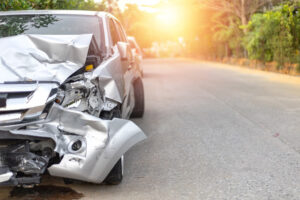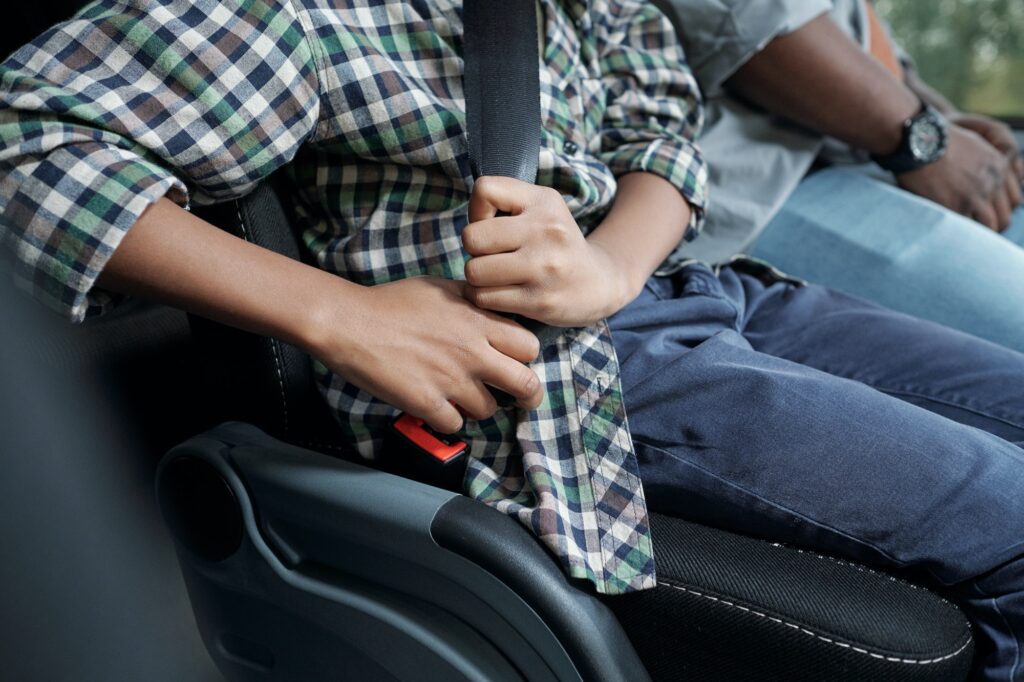 Car accidents happen all the time. However, many types of accidents can occur, and everyone’s situation is slightly different. If you have been in an accident, call one of our Saint Louis car accident lawyers. Suppose you simply want to better educate yourself to improve your driving, situational awareness, and general highway safety. In that case, you will find the following information useful about these five types of car collisions and the common injuries resulting from them.
Car accidents happen all the time. However, many types of accidents can occur, and everyone’s situation is slightly different. If you have been in an accident, call one of our Saint Louis car accident lawyers. Suppose you simply want to better educate yourself to improve your driving, situational awareness, and general highway safety. In that case, you will find the following information useful about these five types of car collisions and the common injuries resulting from them.
| Type of Collision | Associated Injuries | Common Causes |
|---|---|---|
| Rear-End Collisions | Whiplash, head trauma, back injuries, leg and chest injuries | Most common, often preventable, caused by distracted driving |
| Side-Impact Collisions | Head injuries, chest trauma, broken bones | Increased by 20% over 20 years, often due to running red lights |
| Parking Lot Crashes | Minor soft-tissue injuries, whiplash, broken bones | Common in parking lots, liability can be challenging to determine |
| Single Vehicle Crashes | Major injuries, death, head injuries, chest trauma | Often caused by driver error, preventable, influenced by speed and distractions |
| Head-On Collisions | Serious injury, death | Rare but highly dangerous, often caused by confusion or impaired driving |
1. Rear-End Collisions
Rear-end collisions are incredibly common. In America alone, there are about 1.7 million rear-end collisions each year, and 1,700 of those result in fatalities, according to the Washington Post. About 500,000 results in injuries. These types of accidents are common during merging or changing lanes, in heavy traffic, and at intersections with traffic signals or stop signs.
Around 87 percent of them involved drivers that were not paying attention, according to the National Highway Traffic and Safety Administration. Rear-end collisions, while the most common, are also the most preventable. Modern technology such as cellular phones and a wide array of in-vehicle electronic and entertainment systems are major contributors to distracted driving
Usually, the driver who rear-ends the vehicle in front of it is held responsible because it is typically assumed that they were either tailgating, not paying attention, or driving too fast for the conditions. However, the other driver may be held responsible if they suddenly stepped on their brakes, reversed, or they suddenly changed lanes without warning.
One of the most common injuries associated with rear-end collisions is whiplash, which occurs after the head is forcibly whipped forward and then backward. causing difficult-to-diagnose damage to parts of the spine. However, a powerful rear-end collision can cause serious head trauma and back injuries as well as leg and chest injuries if you are forced forward into the steering wheel or dashboard.
2. Side-Impact Collisions
Side-impact collisions, or T-bone collisions, happen when one car hits the side of another. The most common way these crashes can happen is if you are driving through an intersection and someone runs a red light, or stop sign, or fails to yield, resulting in them crashing into you. Thanks to more cars and higher speeds, side-impact collisions have increased by 20 percent over the past 20 years. High-impact T-bone collisions can cause serious injuries or even death depending on where the vehicle is struck.
A common injury associated with a side-impact collision is a head injury. Head injuries can happen if you hit your head against something, but your brain can get damaged if it hits the wall of your skull too hard. These are common because the force of a side-impact collision will generally cause the driver or passenger to be thrown about the vehicle. Other common injuries associated with T-bone collisions include chest trauma, and broken ribs, arm, hip, knee, leg, and ankle injuries. A side-impact collision is extremely serious and leaves nearly the entire body vulnerable.
3. Parking Lot Crashes
Parking lots have a lot of cars trying to navigate small spaces, and even though the speed limit is much lower, accidents still happen. Someone may be racing you to a parking spot, driving too fast, or backing out and not paying attention.

Parking lot accidents usually result in minor soft-tissue injuries because they are at such low speeds, but depending on the type of accident, you can still get whiplash or broken bones.
Liability can be difficult at times in a parking lot crash, as at times it can be hard to prove who is at fault. They are the king of the “he said, she said” style of the incident. For example, if you and someone else started pulling out of a parking lot at about the same time, it may be hard to determine who was first and had the right of way.
4. Single Vehicle Crashes
At first, single-vehicle crashes may seem like the least dangerous, but they often result in major injuries or even death, sometimes to multiple occupants. They commonly occur at higher speeds, increasing the likelihood of major damage and serious injury. When only one car is involved in the accident, it is most often caused by driver error. The driver may have been looking at their phone and not realized they were drifting toward a post, off the shoulder, over the center line, or did not notice an animal or debris in the roadway. Driving under the influence of alcohol or drugs is another major cause of single-vehicle accidents. Most single-vehicle accidents are preventable and are a major reason people should not drive distracted or under the influence.
In most cases, the driver is responsible for single-vehicle crashes; however, in some instances, something else may have caused the accident. Perhaps you were paying attention and following the rules of the road, but a defective tire suddenly blew. A mechanic overtightened the lug nuts and they strip, causing a tire to come off, an airbag going off without warning, etc. If any event such as those transpires, the manufacturer or another third party may be held responsible for your crash.
5. Head-On Collisions
Head-on collisions are some of the most deadly and dangerous accidents on the road, especially if cars are driving at high speeds. These types of accidents can often result in serious injury or death to occupants of both vehicles involved in the accident. Thankfully, they are rare. only about 2 percent of crashes in America are head-on collisions. Despite their rarity, they still account for over 10 percent of all driving-related fatalities.
Head-on collisions are less common because someone has to be driving in the wrong lane, which isn’t common. They may happen if people are confused on an unfamiliar roadway, cannot see well, the weather conditions make visibility poor, or if they are under the influence of drugs or alcohol. Some people may also drift into the other lane if they are driving distracted or take a curve too fast, crossing the center line.
Car Collision Case Study: A Rear-End Accident
In a rear-end collision case, a driver who had stopped to assist at an accident scene was injured, leading to a $250,000 settlement with three defendants. The individual halted to help on the highway, and as they were aiding the person still in the vehicle, their vehicle was rear-ended by another. The chain of events began with an attempt to pass another vehicle, which resulted in a rear-end collision. This incident led to the injured party obtaining settlements from the parties involved. A lawsuit was filed against the designated driver that day for negligently stopping their vehicle in traffic lanes, which contributed to the case. Ultimately, the case centered on a simple negligence theory based on the stopping position of the vehicle. The insurers for the parties involved contributed to the $250,000 settlements.
Check out the full case study here.
According to the Centers for Disease Control, car crashes are the first cause of death in those ages 1-54 in the U.S., and in 2012, nonfatal crash injuries accounted for over $50 billion in lifetime medical and work loss costs. The consequences of car crash injury can be long-lasting, oftentimes resulting in long-term damage to the quality of your life, as well as to your livelihood. However, there are a few ways to lessen the risk of injury if you happen to be in an automobile crash.
Wear A Seatbelt

One of the best ways to prevent or minimize injury in a car crash is to wear a seatbelt. The National Highway Traffic Safety Administration states that seatbelts reduce crash-related injuries and deaths by about half. In addition to keeping you safe, buckling in will prevent you from getting a traffic ticket. Missouri state law requires all drivers and passengers to wear seat belts – click it or ticket!
Adjust The Headrest Properly
One of the most common types of crash-related injuries that occur is soft tissue injuries to the neck and back, damaging the area’s muscles, tendons, and ligaments. Soft tissue injuries are most often caused by whiplash – a common occurrence in rear collisions, when the head and neck snap back and then fly forward following impact. These injuries can manifest a broad variety of negative symptoms. Properly adjusting your headrest can ameliorate whiplash.
Your headrest should be adjusted as close to the back of your head as possible. Reducing the amount of space between the headrest and yours can decrease the force with which the head and neck will jerk forward as a result of flying back. Your headrest should be level to the top of your head and there should be no more than two inches of space between the headrest and the back of your head. The standard headrest is designed for the height of the average American man (5’10), so it is suggested that women and shorter men adjust the headrest down as much as possible.
Don’t Sit Too Close To The Wheel
Sitting too close to the wheel can result in being hit directly by the airbag following a collision. Airbags deploy at speeds nearing 200 mph and often cause chest injuries like rib and sternum fractures, as well as pulmonary and cardiac trauma. To prevent injury, it is recommended that you sit no closer than 10 inches to the wheel.
Secure All Items
It is suggested that you place all unsecured items under the seat or in the trunk of the car. Books, CDs, purses, and smaller items can easily fit under the seat; anything larger should go in the trunk. Doing this prevents items from becoming projectiles in a crash and harming passengers. Heavy items in the trunk should be tethered down to prevent them from slamming into the back passenger compartment in the case of a crash.
Brace Yourself
In the event that you see a car quickly approaching and anticipate an oncoming collision, studies have proven that bracing your body for the collision can minimize injury. The best way to brace your body for a crash is to follow these steps:
- Brace your head against the headrest.
- Continue looking forward. Your chance of injury increases if your head is turned upon impact.
- Press your foot into the break while pushing your back into the seat. Keeping your foot on the break prevents your car from being thrust into traffic and possibly causing another crash.
- Tense all your muscles. Tensing your muscles will assist in reducing the risk of muscle and ligament injury.
If you are in an auto crash you may not immediately realize you have been injured, as many crash-related injuries have symptoms that appear over time. We suggest that you seek immediate medical care following any automobile crash as a preventative measure. If you feel you may have been injured, you should also contact a personal injury lawyer.
Have You Been Injured? Call Cantor Injury Law
Contact Cantor Injury law today, at (314) 628-9999 to speak with a personal injury attorney about your car accident. Explain what type of the five types of car collisions you had and we can help.
Frequently Asked Questions (FAQs) About Car Accidents and Their Causes
1. What is the most common type of car collision, and what are its causes?
The most common type of collision is a Rear-End Collision. These accidents typically occur when one vehicle crashes into the rear of another. Causes often involve tailgating, inattention, or driving too fast for the conditions. Distracted driving, often due to cell phones and in-vehicle entertainment systems, plays a significant role in these accidents.
2. What are the various types of fatal accidents, and what are their common causes?
Fatal car accidents can take several forms, including Rear-End Collisions, Side-Impact Collisions (T-bone), Parking Lot Crashes, Single-Vehicle Crashes, and Head-On Collisions. The common causes of fatalities include factors like inattention, excessive speed, driving under the influence, and poor visibility. Each type of accident has its own set of dangers and injury patterns.
3. What are the two main types of accidents, and how are they distinguished?
The two primary types of car collisions are single-vehicle crashes and multi-vehicle crashes. Single-vehicle accidents typically result from driver errors, such as distractions or impaired driving. In multi-vehicle accidents, more than one vehicle is involved, and liability may vary based on the specific circumstances.
4. Is tapping a bumper considered an accident, and how does it relate to fender benders and serious accidents?
Yes, even a minor bumper tap is considered an accident. These are often referred to as fender benders. Fender benders involve minor damage and typically result in no or minor injuries. Serious accidents, on the other hand, can lead to severe injuries or fatalities. The extent of the impact and resulting injuries differentiates these categories.
